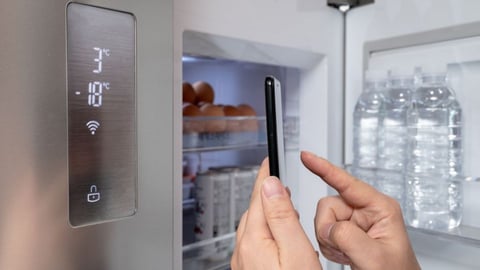Moving Consumer Purchase Decisions from Product to Customer Experience with Technology
Before COVID-19 reared its ugly head, it was proudly predicted that the era of customer experience had arrived. In an article by April Reagan, she highlighted that new innovations in consumer electronic products were being aimed at customer experience and “purpose” by being “smart” rather than commoditized “product.”
Data and intelligence were at the heart of most of the new innovations to provide convenience, health consciousness, safety and comfort for the customer in the home or on the move. Technology advances through digitization, robotics, sensors, AV/VR, IoT and 5G connectivity were deemed to lead the way for new innovations in personalization, mobility and smart homes.
For consumer electronics manufacturers, the rapid advance of 5G and IoT developments will certainly ramp up increased opportunities to connect devices, particularly home devices and wearables which are capable of reducing workload for humans, deliver more convenience and record data which can detect patterns of usage. More and more products will create true value for customers through purposeful customer experience above basic product specs.
During the COVID lockdown there has been a boom in online shopping for consumer electronics, particularly on safe “well-known brands.” However, managers of “invisible brands” might seek to connect by delivering information of full functionality on smart products to inspire future use and purchases. See Samsung as an example.
‘Devicification’
The increased penetration and leverage of IoT developments to connect devices can enhance customer experience. Brands that incorporate differentiated consumer experiences by creating a conversation between machines, consumables, and people using inbuilt sensors can create incremental revenue streams by providing auto-replenishment services.
Consumables can often offer high margins particularly on high value devices increasing brand loyalty and recurring revenues.
The roll-out of IoT developments and 5G, elevating experiences
New IoT developments through sensor inclusion in devices promise to have a major effect on creating differentiators in the post-sale experience. IoT-enabled consumer electronics allows all parts of a connected ecosystem to be purchased together as a bundle and through sensors and beacons, brick and mortar stores can learn what items frequently are purchased together like on Amazon.
Added to the forthcoming rollout of 5G networks, they will make a dynamic impact on elevating experiences in Consumer electronics. Ericsson, for one, believes it’s likely to set the stage for more immersive entertainment through AR/VR, delivering sensory experiences through touch plus more innovative interactive engagement.
The question will be how to manage all the product data that these new experiences will need and how will this be coordinated through the process of new product introduction, manufacture, supply and ongoing sales and marketing?
Harnessing Product data information
As the plethora of new technologies get included into new advanced consumer electronics, accurate product information will be required from product groups in manufacturers right through to e-commerce and omnichannel delivery as an informed compelling part of the customer experience.
The art of product nformation management is key and lies at the heart of igniting both online and offline sales. Companies such as ProductsUp and Sales Layer are helping brands manage the exponential growth in product information needed to inform and engage an ever-knowledgeable buyer.
Through the creation of catalogues with good quality pictures, videos and recommendations, easing the search path, defining pricing strategy and promoting product bundles and assortments that buyers can quickly understand, which build strong relationships and long-lasting revenues. Which in themselves become part of a consistent customer experience through all channels.
New technologies and applications can be fed product information provided by these tools to enable ‘smart’ experiences to applications such as chat-bots and voice recognition devices. As an example, Samsung‘s STAR Labs presented next-gen AI chatbots at CES 2020, with four artificial humans —which can remember and learn, therefore providing great powers of customer engagement.
The seeds of innovation in building customer experience
The challenge of anticipating consumers’ needs, and measuring and managing product innovation to address those needs, is likely to get tougher as a result of massive, lasting behavioral disruption across consumers, categories and channels. Customer experience has taken on a new definition and dimension in the overwhelming challenge of COVID-19.
Customer leaders who care and innovate during this crisis and anticipate how customers will change their habits will build stronger relationships that will endure well beyond the crisis’s passing.
As Oliver Wyman says, “Global competition and technology diffusion mean that competitors will quickly match most improvements. And the radical transparency of digital and social media prompts consumers to quickly switch allegiance with each new alluring offer. For many of today’s most innovative and up-and-coming brands, the product is not the star. So what is driving differentiation and growth? The answer lies in the experience.”
Having worked in tech and marketing with many international companies for over 20 years, Mike Owen has built up a strong interest and now writes on how advanced and exciting technologies are impacting industry sectors and business practices through digital transformation.





